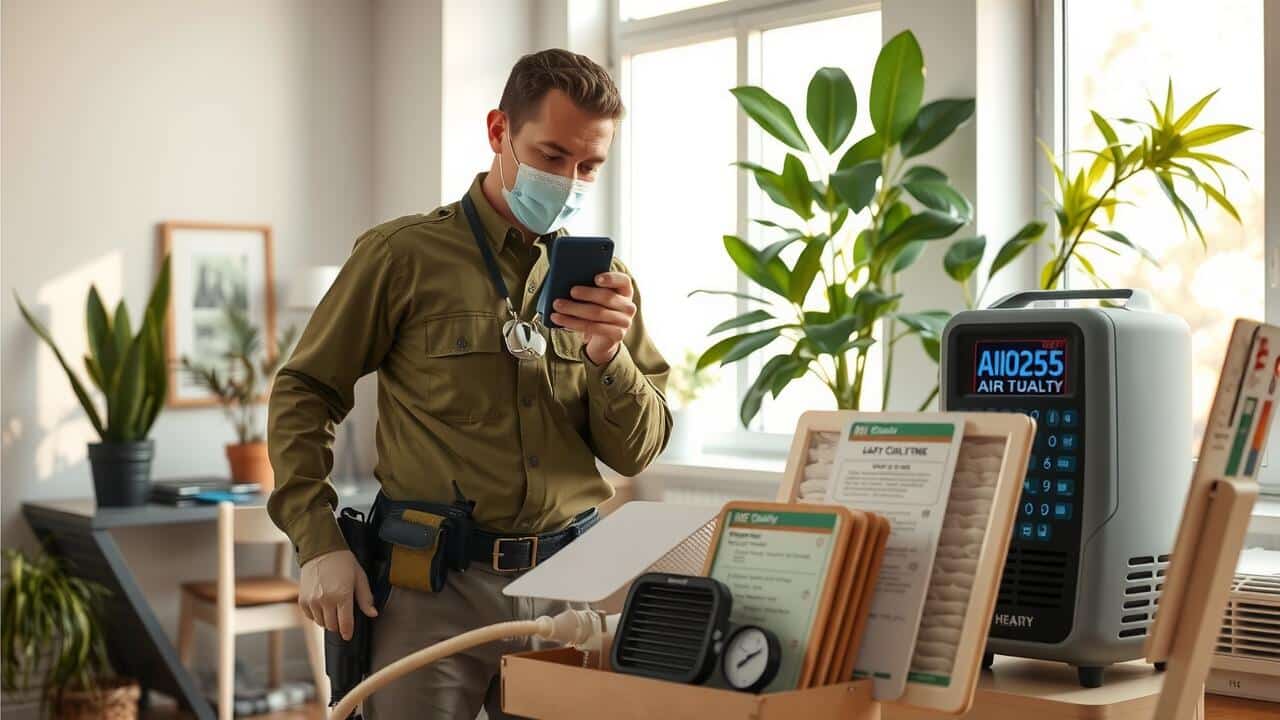
Table Of Contents
Importance of Humidity Control
Humidity control plays a crucial role in maintaining a healthy indoor environment. High humidity levels can lead to mold growth, dust mites, and other allergens that negatively impact respiratory health. Conversely, excessively low humidity can cause dry skin, irritation of the respiratory tract, and heightened vulnerability to infections. By managing indoor humidity, homeowners can significantly contribute to Indoor Air Quality Improvement.
Achieving and maintaining optimal humidity levels not only enhances comfort but also protects the structure of the home. Proper humidity reduces the risk of wood rot and structural damage while also preventing static electricity buildup. Using humidifiers or dehumidifiers, in conjunction with regular monitoring of indoor moisture levels, fosters a more balanced environment. This attention to humidity directly supports overall indoor air quality and well-being.
Ideal Humidity Levels for Indoor Spaces
Maintaining optimal humidity levels in indoor spaces is essential for achieving Indoor Air Quality Improvement. The ideal relative humidity range falls between 30% and 50%. Within this range, both comfort and health are enhanced. Higher humidity can promote mold growth, while lower levels can lead to dry skin and respiratory issues.
Monitoring humidity levels regularly is vital for ensuring a balanced environment. Utilizing hygrometers can provide accurate readings. Incorporating humidifiers or dehumidifiers can help in adjusting levels as needed. This proactive approach contributes significantly to maintaining both comfort and air quality indoors.
Natural Methods to Enhance Air Quality
Natural methods for enhancing indoor air quality often rely on the power of plants. Certain species are known for their ability to filter toxins and improve overall air purity. For instance, spider plants, peace lilies, and snake plants can effectively absorb harmful pollutants such as formaldehyde, benzene, and carbon monoxide. Incorporating these plants into indoor spaces not only helps in removing contaminants but also adds a touch of nature, creating a more inviting atmosphere.
Another effective approach to indoor air quality improvement is through proper ventilation. Opening windows regularly allows fresh air to circulate, reducing the concentration of indoor pollutants. Using exhaust fans in kitchens and bathrooms can also help eliminate moisture and odors. Additionally, bringing fresh air indoors can drown out stale air, promoting a healthier and more comfortable living environment.
Plants that Improve Indoor Air Quality
Houseplants contribute significantly to indoor air quality improvement by filtering pollutants and producing oxygen. Certain species, such as snake plants and spider plants, can absorb toxins like formaldehyde and benzene from the air. Their natural processes not only enhance the aesthetic appeal of indoor spaces but also create a healthier environment by promoting cleaner air.
In addition to their air-purifying abilities, plants help regulate humidity levels. This moisture regulation can alleviate respiratory issues and improve overall comfort within a home or office. Incorporating a selection of indoor plants can be an effective strategy for anyone looking to enhance indoor air quality, ensuring a fresher atmosphere conducive to wellbeing.
Regular Maintenance and Cleaning
Regular maintenance and cleaning play a pivotal role in ensuring Indoor Air Quality Improvement. Dust, allergens, and pollutants accumulate over time, making it essential to establish a consistent cleaning routine. Regularly vacuuming carpets and rugs helps to remove trapped particles that may otherwise be released into the air. The use of high-efficiency particulate air (HEPA) filters can significantly enhance air quality by capturing microscopic airborne particles, contributing to a healthier indoor environment.
In addition to vacuuming, other cleaning practices are crucial for maintaining indoor air quality. Wiping surfaces with damp cloths minimizes the dispersion of dust, while frequent washing of bedding and curtains can significantly reduce allergens. It is also important to check and change HVAC filters regularly. This simple action not only improves air quality but also ensures that heating and cooling systems run efficiently, further supporting consistent Indoor Air Quality Improvement throughout the home.
Best Practices for Indoor Cleaning
Regular cleaning plays a crucial role in maintaining good indoor air quality. Dust, allergens, and other particulates can accumulate on surfaces over time. Using a vacuum equipped with a HEPA filter can effectively capture these pollutants. Mopping floors and wiping down surfaces with damp cloths can also minimize dust dispersal into the air. Frequent cleaning helps prevent the buildup of mold and bacteria, both of which can negatively impact indoor air quality.
Incorporating green cleaning products provides an additional layer of indoor air quality improvement. Traditional cleaning agents can release volatile organic compounds (VOCs) that may contribute to poor air quality and cause health issues. Opting for natural solutions reduces these risks while still ensuring effective cleaning. Encouraging proper ventilation during cleaning is also vital. Opening windows can help circulate fresh air, aiding in the removal of any residual chemical odors from cleaning products.
FAQS
What is indoor air quality and why is it important?
Indoor air quality refers to the condition of the air within buildings, and it is crucial because poor air quality can lead to health issues, allergies, and discomfort for occupants.
How does humidity affect indoor air quality?
Humidity plays a significant role in indoor air quality; maintaining ideal humidity levels helps prevent mold growth and dust mites, which can improve overall health and comfort.
What are some natural methods to improve indoor air quality?
Natural methods include incorporating indoor plants that filter pollutants, ensuring proper ventilation, and utilizing natural air purifying agents like essential oils.
Which plants are best for enhancing indoor air quality?
Some of the best plants for improving indoor air quality include peace lilies, spider plants, and snake plants, as they are known for their air-purifying abilities.
What are effective practices for maintaining clean indoor air?
Effective practices include regular cleaning and dusting, using high-efficiency particulate air (HEPA) filters, and ensuring proper ventilation to reduce indoor pollutants.


